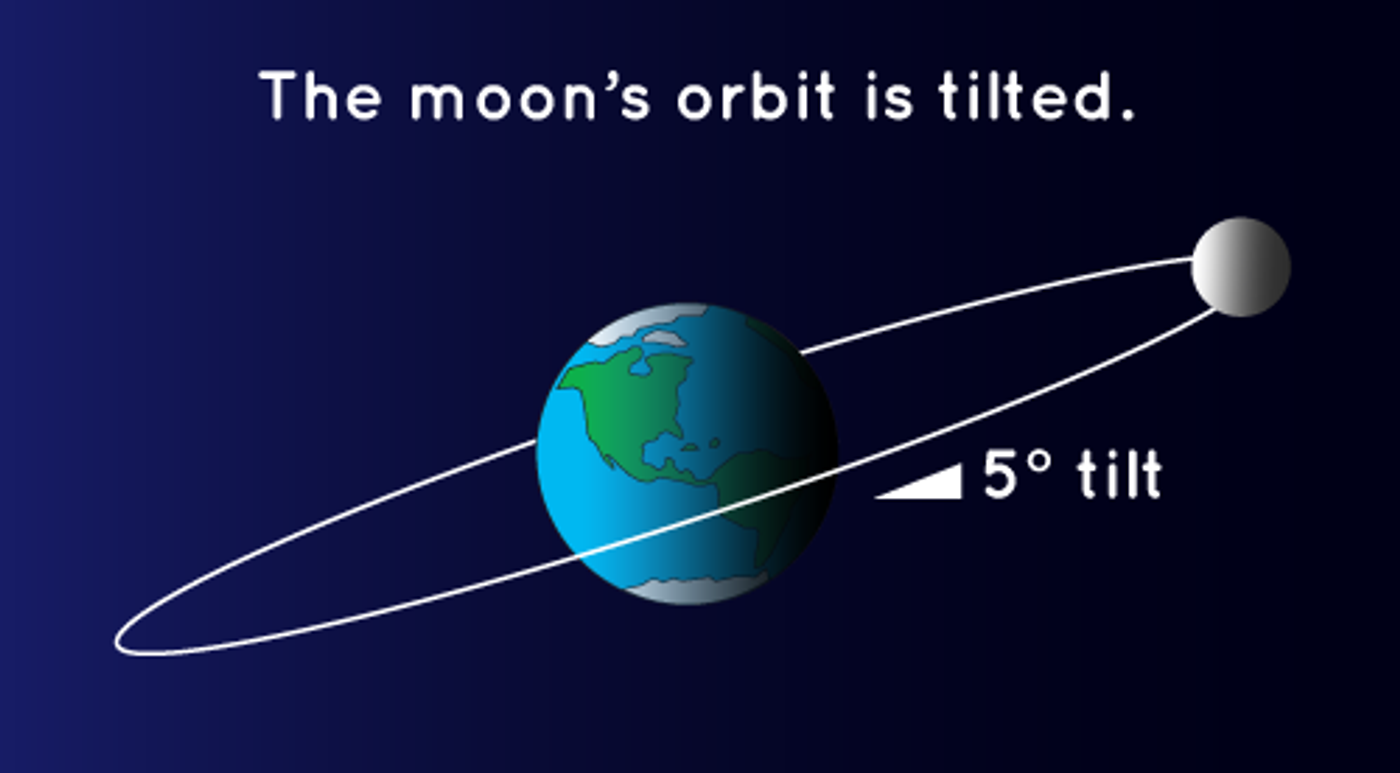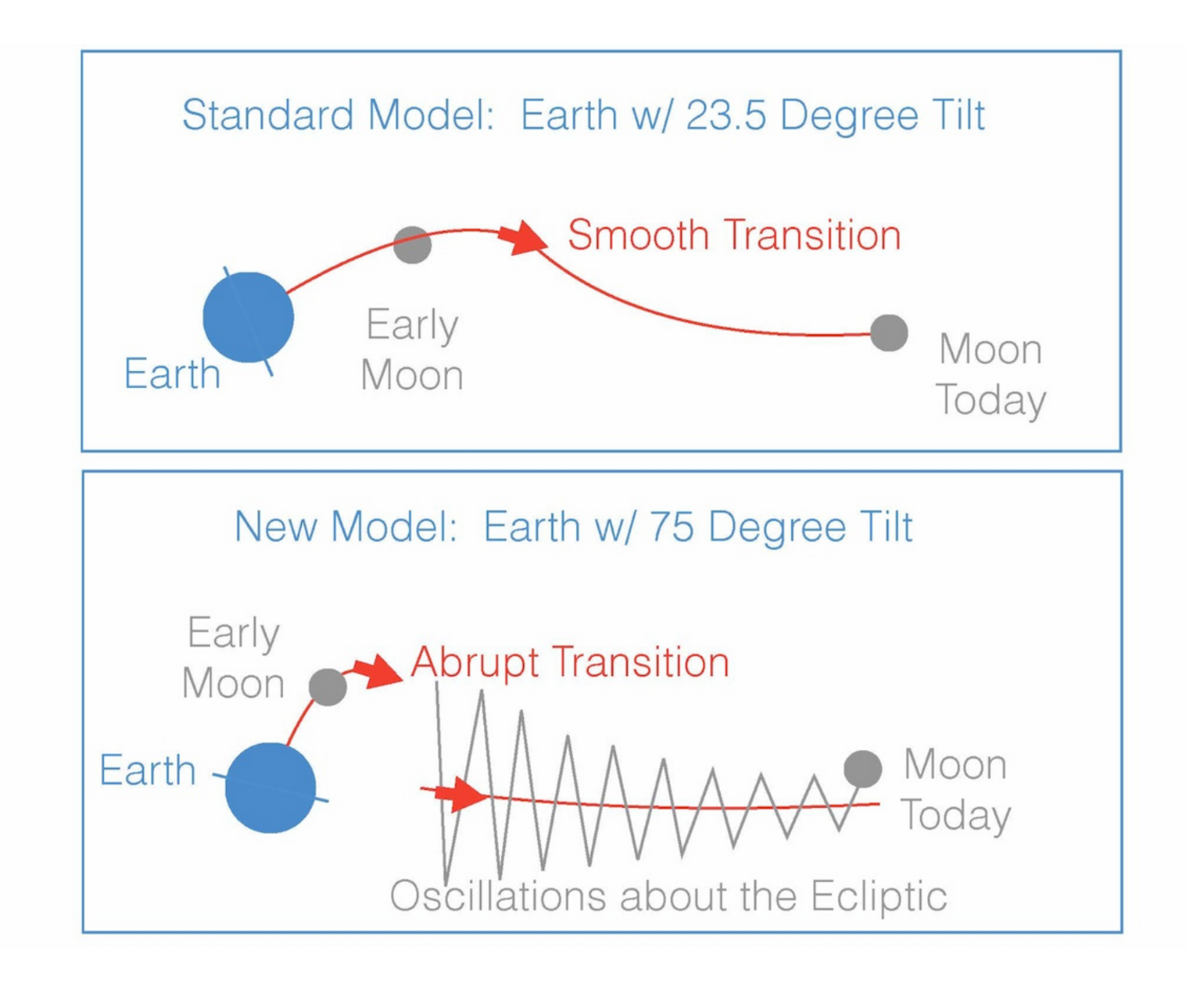Why Does the Moon Have Such a Pronounced Tilt?
One thing has baffled astronomers for a long time, and that’s why the Moon is so far away from Earth and why it has such an unusually pronounced tilt from the ecliptic plane. Most natural satellites orbit their planets much closer and without such a noticeable tilt.

Image Credit: NASA
Despite the oddity, scientists think they may have finally come up with a likely scenario about how this might have occurred. New models, written about in the journal Nature, reveal more on the researchers’ findings.
One of the most important notes in the research was how the major impact that formed the Moon may have thrown the Earth into an extremely steep tilt; one very much unlike the one we see today. It also would have increased Earth’s rotational speed a significant amount, which would have been slowed down over time by the unusual tilt.
“Evidence suggests a giant impact blasted off a huge amount of material that formed the moon,” said Douglas Hamilton, a co-author of the study. “This material would have formed a ring of debris first, then the ring would have aggregated to form the moon. But this scenario does not quite work if the Earth’s spin axis was tilted at the 23.5-degree angle we see today.”
Using computer models, the researchers found that our current understanding of how the Moon formed just couldn’t have been the case.
Instead, what must have happened was the Earth was struck so hard by another object that the planet’s rotation was increased nearly two-fold. The impact would have shifted the planet’s tilt to somewhere between 60-80 degrees at the time of the collision as well.
Following the impact, a debris ring would have been created around the Earth, and the Moon would have been formed from this debris ring over time. This Moon would have initially formed close to the planet, however the orbital path was chaotic while this went on, and the Moon would have slowly drifted away from Earth as it fought with the Sun’s gravitational pull as well.

Image Credit: Douglas Hamilton
"As the moon moved outward, Earth's steep tilt made for a more chaotic transition as the sun became a bigger influence," lead author Matja Cuk said. "Subsequently, and over billions of years, the moon's tilt slowly decayed down to the five degrees we see today. So today's five-degree tilt is a relic and a signature of a much steeper tilt in the past."
What formed today’s Earth/Moon system was a complex tug of war between the Earth and the Sun, as well as the chaotic tilting conditions, which have finally reached a point of equilibrium where it’s found today.
The researchers admit this is only one possible outcome out of many, but it’s a starting point.
"There are many potential paths from the moon's formation to the Earth-moon system we see today. We've identified a few of them, but there are sure to be other possibilities," Hamilton said. "What we have now is a model that is more probable and works more cleanly than previous attempts. We think this is a significant improvement that gets us closer to what actually happened."
While the confusion surrounding the Earth and Moon’s odd tilt still remains a very real mystery, this research just opened a can of worms that more astronomers and space physicists can use to rethink and perfect modern theories.
One thing is certain, and that's how looking back so far into the Earth's history isn't easy to do. With so many possibilities, and a large gap of time separating scientists from seeing what really happened, all we can do is speculate from the evidence.
Source: University of Maryland via Science Daily









